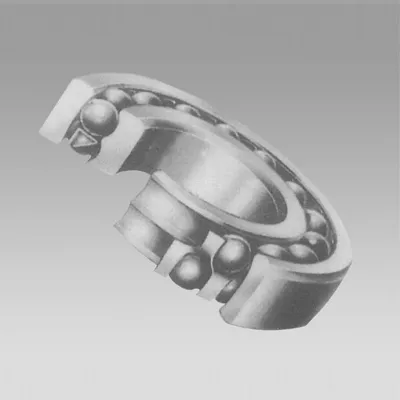
Nov . 10, 2024 15:08 Back to list
Understanding the Mechanics and Applications of Cylindrical Rolling Bearings in Machinery
Understanding Cylindrical Rolling Bearings Design, Function, and Applications
Cylindrical rolling bearings are a crucial component in various mechanical systems, offering support for rotating shafts while accommodating radial and axial loads. Their design and functionality are fundamental across numerous applications, ranging from automotive to industrial machinery. In this article, we will explore the components, working principles, advantages, and applications of cylindrical rolling bearings.
Components of Cylindrical Rolling Bearings
Cylindrical rolling bearings consist of several key components
1. Inner Ring This is mounted on the rotating shaft, providing the path for the rolling elements.
2. Outer Ring Fixed within the housing, the outer ring also provides the raceway for the rolling elements.
3. Rolling Elements Typically, these are cylindrical rollers that reduce friction between the inner and outer rings. Their shape allows them to bear heavy loads more effectively than spherical counterparts.
4. Cage (or Separator) This holds the rolling elements in position, ensuring they do not come into contact with each other, which could lead to wear or failure.
5. Seals or Shields Optional components that protect the interior of the bearing from dust, contaminants, and lubricants, thereby prolonging its life.
Working Principle
The working principle of cylindrical rolling bearings is relatively simple yet highly effective. When the shaft (attached to the inner ring) rotates, the rolling elements roll along the raceways of both the inner and outer rings. The design of cylindrical rolling bearings allows them to handle both radial and axial loads. The cylindrical shape of the rolling elements provides a larger contact area with the raceways, which contributes to their ability to support heavy loads and operate efficiently at high speeds.
The rolling action minimizes friction compared to sliding contact, resulting in less heat generation and lower energy consumption. This efficiency is paramount in industrial applications where power loss can translate into significant operational costs.
Advantages of Cylindrical Rolling Bearings
Cylindrical rolling bearings offer several advantages, making them a popular choice in various applications
cylindrical rolling bearing

1. High Load Capacity The design allows them to bear significant radial and axial loads, making them suitable for heavy-duty applications.
2. Reduced Friction The rolling motion of cylindrical elements results in lower friction compared to traditional sliding bearings, contributing to energy efficiency.
3. Durability and Reliability Due to their robust construction, these bearings tend to have extended service life, reducing the need for frequent replacements.
4. Versatility They can be used in a wide range of applications, from light machinery to heavy industrial equipment.
5. Ease of Maintenance Many cylindrical rolling bearings come with seals that facilitate maintenance and prolong their operational lifespan by keeping lubricants in and contaminants out.
Applications
Cylindrical rolling bearings are ubiquitous across various sectors. Some key applications include
- Automotive Industry Used in gearboxes, wheel hubs, and other moving parts where high load capacity and durability are required.
- Manufacturing Machinery Essential for conveyor systems, pumps, and compressors, where smooth and reliable operation is crucial.
- Aerospace Employed in various components of aircraft, where weight and strength are critical factors.
- Railways Used in wheelsets and other components to facilitate smooth movement and reduce wear.
- Renewable Energy Found in wind turbine gearboxes, contributing to the efficient conversion of wind energy into electrical power.
Conclusion
Cylindrical rolling bearings play an indispensable role in modern machinery and engineering applications. Their ability to support heavy loads, reduce friction, and offer durability makes them a fundamental choice in an array of industries. As technology continues to advance, ongoing developments in bearing design and materials will likely improve performance further, ensuring cylindrical rolling bearings remain essential for efficient and reliable mechanical systems in the years to come. Understanding these components and their functions is crucial for engineers and designers looking to optimize performance in their applications.
Latest news
-
Premium Deep Groove Ball Bearings | High Speed & Reliability
NewsAug.29,2025
-
Durable Scaffolding Clamps - Secure & Reliable Tube Connectors
NewsAug.28,2025
-
Common Failures in Thrust Ball Bearings and Solutions
NewsAug.22,2025
-
How Tapered Roller Bearings Can Take Shock Loads
NewsAug.22,2025
-
Angular Bearings in High-Precision Spindles
NewsAug.22,2025
-
The Impact of Misalignment on Cylindrical Roller Bearing Performance
NewsAug.22,2025
